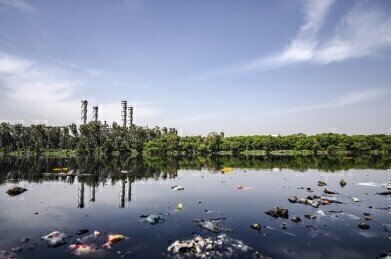Water/Wastewater
What Are the Different Types of Water Pollution?
Jan 31 2020
The second most prevalent kind of pollution after contaminated air, water pollution afflicts our rivers, lakes, reservoirs, groundwater and aquifers – not to mention the seas and oceans which cover the majority of our planet. However, not all kinds of water pollution come from the same source. Here’s a quick rundown of the different types of water pollution currently compromising the quality of H0 all over the globe.
Chemical pollution
The most common type of water pollution, chemicals can infiltrate both underground water sources and those sitting on the Earth’s surface. As an integral component of the agricultural industry, it’s unsurprising that much of chemical contamination comes from the pesticides and fungicides used in farming, but metals and solvents from industrial sites are also leading contributors.
Groundwater pollution
As mentioned above, agriculture is a key source of water pollution, especially for groundwater. Fertilisers and pesticides applied to crops can seep into the ground and contaminate underwater rivers and waterbeds, thus compromising the quality of wells, boreholes and other places from which groundwater is extracted for human use.
Microbiological pollution
Unlike most others on this list, microbiological pollution is a naturally occurring form of water contamination. Microorganisms such as bacteria, protozoa and viruses can infiltrate water supplies, causing diseases such as bilharzia and cholera. Humans are most susceptible to this kind of pollution in places where adequate water treatment systems are not yet in place.
Nutrient pollution
While they’re vital for underwater flora and fauna to flourish, an excess of nutrients can upset the delicate imbalance of water-based ecosystems. Fertilisers contain a high concentration of nutrients which, if they contaminate rivers, lakes and coastal areas, can cause algal blooming that can block out sunlight and inhibit the growth of other organisms.
Oxygen-depletion pollution
Another consequence of algal blooms is their consumption of oxygen supplies. This means that those species which depend upon oxygen to survive are killed off, while anaerobic ones thrive. Some anaerobic microorganisms are capable of producing ammonia, sulphides and other harmful toxins, which can make the water even more dangerous to animals (and humans, too).
Surface water pollution
Referring to all water sources above ground, such as rivers, lakes, seas and oceans, surface water pollution can occur both naturally, accidentally and intentionally. For example, monitoring has an all-important role in natural flood management, which can lead to poor water quality, while accidental oil spills and negligent industries emptying waste into water bodies are also key contributors.
Suspended matter
Improperly discarded waste, such as fragments of plastic, rubber or other manmade materials, can find themselves into water sources and persist for a long time. Because they are too robust to dissolve in the water and too big to mix effectively with the molecules, they simply float on its surface and prevent oxygen and sunlight from penetrating below.
Digital Edition
AET 28.2 April/May 2024
May 2024
Business News - Teledyne Marine expands with the acquisition of Valeport - Signal partners with gas analysis experts in Korea Air Monitoring - Continuous Fine Particulate Emission Monitor...
View all digital editions
Events
Jul 30 2024 Jakarta, Indonesia
China Energy Summit & Exhibition
Jul 31 2024 Beijing, China
2024 Beijing International Coal & Mining Exhibition
Aug 07 2024 Beijing, China
IWA World Water Congress & Exhibition
Aug 11 2024 Toronto, Canada
Aug 25 2024 Stockholm, Sweden and online









.jpg)








